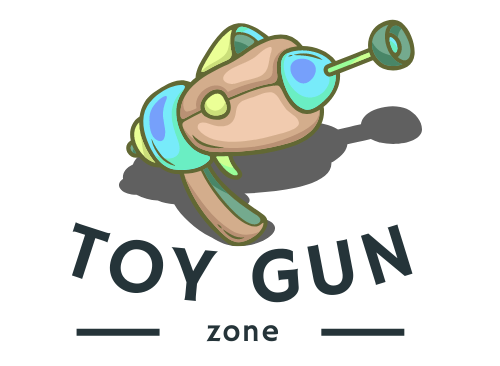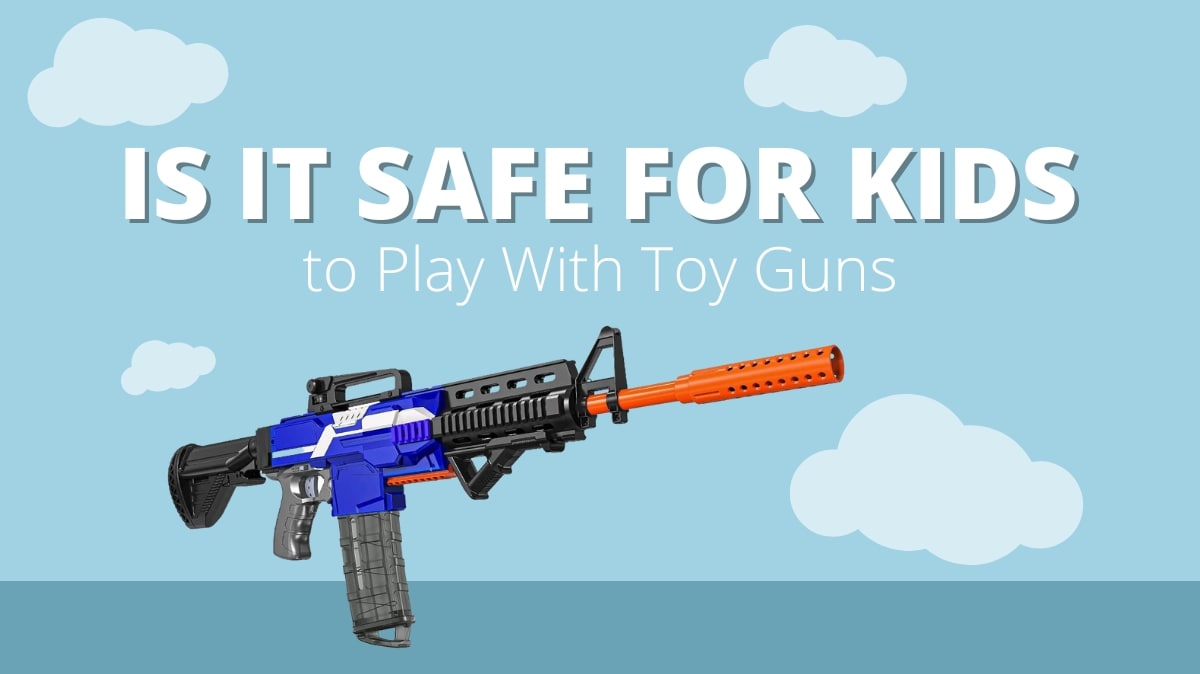The topic of whether it is appropriate for children to play with toy guns is a controversial one. Some argue that playing with toy guns can lead to an increased tolerance for violence and aggression, while others see it as a harmless play that helps children develop their imagination and social skills.
In this discussion, we will explore both sides of the debate and provide a balanced perspective on whether or not it is okay for kids to play with toy guns. We will consider various factors, including age appropriateness, parental supervision, and the potential impact on a child’s behavior and development.
Ultimately, the decision to allow children to play with toy guns is a personal one that each family must make for themselves based on their values, beliefs, and individual circumstances.
Understanding the Debate
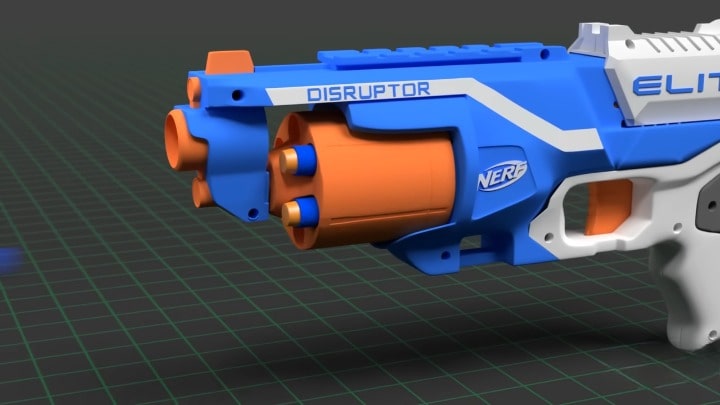
The debate over the appropriateness of toy guns for children has been ongoing for years. On one hand, toy guns can help encourage imaginative and creative play. On the other hand, some people are concerned that toy guns can encourage violent behavior and desensitize kids to the real-life consequences of firearms.
Pros and Cons of Toy Guns
Playing with toy guns is surrounded by an abundance of controversy. Those opposed to children using them argue that pretending to shoot and kill encourages aggressive behavior and desensitizes kids to the significance of death. Others believe that parents should have the freedom to choose if their children are allowed to play with toy guns without facing social backlash or criticism.
While there is no clear consensus on whether kids should be able to play with toy guns, it’s important to consider the potential risks associated with such activity as well as some potential benefits.
Pros:
Proponents of playing with them argue that playing secret agents or cowboys can help develop problem-solving skills, spatial awareness, physical coordination, and creative thinking—all in a safe setting.
It can also help encourage creativity and allow for social interaction among friends and siblings.
There are even educational benefits associated with playing make-believe scenarios where a child has a fantasy mission that can involve geography, history, cause-and-effect relationships, outsmarting adversaries by deduction or negotiation, and empathy for victims.
Cons:
Opponents of toy gun play feel that it promotes violence in children—which raises obvious red flags for parents concerned about the issue.
Others worry that it might not be possible for young children to properly distinguish between real-life consequences of gunplay and innately understanding right from wrong when faced with scenarios like ones they might see in a Western TV show or movie featuring cowboys shooting at one another because they were angry or wanted something belonging to their adversary—and not understanding nor caring about the potential repercussions of their actions in the real world if they were ever faced such a situation.
In addition, some critics worry about “copycat” behaviors where kids attempt dangerous activities involving firearms by inappropriately applying what they have seen portrayed through entertainment sources such as television shows or video games featuring gunfire.
Safety First
Allowing children to play with them can be a tough decision for parents. On one hand, pretend play is an important part of a child’s emotional development. On the other, they can be seen as a source of danger and a gateway to more violent play. So what is the best approach to take?
Here, we will look at the potential benefits and risks of children playing with toy guns and discuss how to ensure safety when play-acting with weapons.
Safety Tips for Parents
It is important to discuss safety with children before they play with any toy guns or other pretend weapons. Parents need to ensure that their children understand the understanding of the seriousness of real guns and the potential danger that comes along with them.
The following tips can help parents keep their kids safe while playing with them:
- Make sure that there are always adult supervision and clear rules. Explain to your child why firearms should only be used for self-defense and hunting, never for fun or pranks.
- Discuss ways to handle conflicts without using violence, such as talking it out or walking away from the situation.
- Be aware of safe gun handling techniques such as not pointing an unloaded toy gun at another person and using eye protection when appropriate.
- Instruct your child to inform adults if they come across a real firearm, even if it is not in use or loaded.
- Do not allow young children unsupervised access to older children’s fake weapons, no matter how harmless they seem. Children may imitate dangerous behavior they have seen adults partake in while playing with their own toy guns.
- Encourage your child to use real-world props like rocks or sticks instead of a pretend weapon when playing outdoors. Explain the importance of being respectful of other people’s property during outdoor play times so neighbors do not feel threatened by imaginary “shootouts” occurring in their yards.
The Role of Supervision
Toys that depict violent activities, such as guns, are often criticized for their potential to promote aggressive behavior. It is important to remember that under appropriate supervision, toys like these can be a harmless part of childhood play.
It is essential for parents to monitor the types of play involving toy guns and explain safety rules to their children. Parents should model good behavior by having open conversations about toy guns and other items related to violence and enforcing rules when appropriate.
Setting clear boundaries and a clear expectation of respectful behavior when it comes to avoiding any forms of aggression can help shape kids’ attitudes towards toys like these. Playing with them should never involve realistic-looking accessories associated with real weaponry such as realistic camouflage clothing or protective gear.
Allowing kids the opportunity to use their imagination by incorporating milder elements, like Nerf® foam bullets or plastic swords is less likely to encourage aggressive behaviors and offers an opportunity for positive interactions with others while they create an imaginative play world within the context of safety guidelines set by parental supervision and guidance.
Educational Benefits
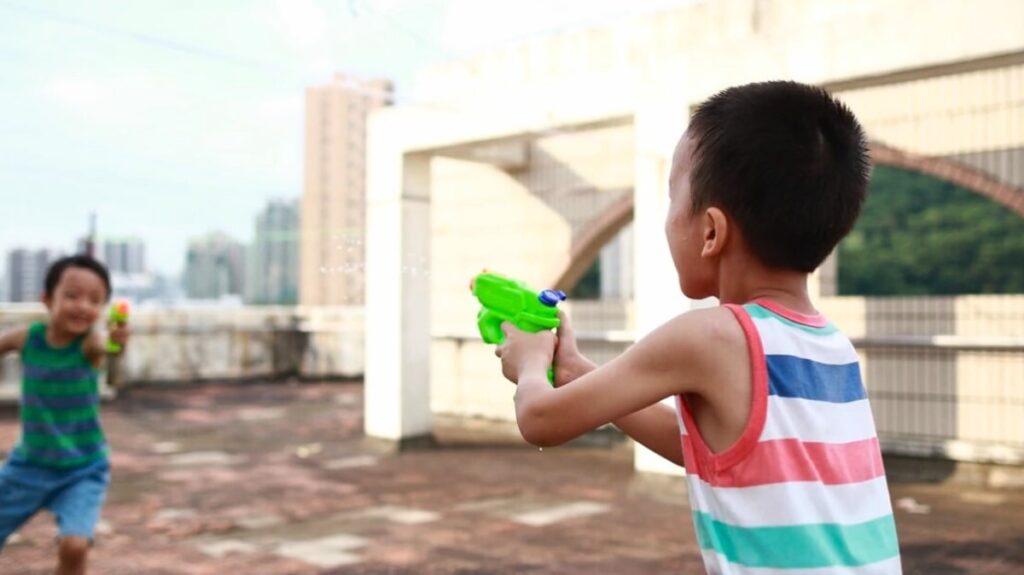
They can help them learn important skills such as accuracy and problem-solving. Additionally, they can also help youngsters explore their imaginations and understand cause and effect.
Let’s explore this topic further and see what other learning benefits can come from playing with toy guns.
Developing Imagination and Creativity
They are often seen as a negative influence on the development of young children. However, in reality, playing with toy guns encourages imaginative play and improves creativity and thought organization.
When children play soldier or shoot-em-up games with their toy weapons, they develop a strong understanding of plot, drama, sequence, and story-telling. This creative activity helps to build healthy social skills such as teamwork, cooperation, delayed gratification, and respect for authority figures like police officers.
Playing with them can also help kids understand the consequences of their actions and teach them to respect limits that adults set about violence or acceptable behavior. While it is important for parents to ensure the use of their toy weapons is non-aggressive and non-threatening, this type of play can also help kids learn concepts such as consequences for behavior and recognize when it might be better to take flight from a situation than to fight.
Overall, letting your children engage in imaginative play involving toy weapons helps them think creatively while still recognizing boundaries for safety. It provides real opportunities for developing social skills along with problem-solving skills that can help guide them later in life during critical situations.
Enhancing Social Skills
The researchers observed that playing with toy guns enhances children’s ability to interact socially. While engaging in activities such as shooting at targets or working together to develop game plans, kids are learning useful skills such as compromise, communication, and teamwork that they can use in their everyday lives.
Moreover, playing with them helps children practice emotional regulation as they consider opposing opinions and collaborate on problem-solving. As one researcher described it “shooting imaginary targets promotes risk-taking which challenged them (the children) to problem-solve within an environment where mistakes were tolerated”.
By getting used to making mistakes and quickly adapting on their feet the kids were improving their real-life social skillsets.
Learning About Conflict Resolution
For many children, playing with them can be a fun way to let their imaginations run wild and foster creative play. Mental health professionals and psychologists agree that imaginative play is an important part of a child’s cognitive development. In addition, when children are playing together in groups, the constructive use of toy guns can help them learn about establishing rules and understanding conflict resolution.
When used appropriately, toy gun games can provide kids with an opportunity to practice problem-solving skills in a non-aggressive and safe environment. When participating in these kinds of games, they are encouraged to work together in order to find solutions when issues arise. They also gain important negotiation skills as they determine roles within the game and how conflicts will be resolved.
Educational experts also talk about how imaginary play has been linked to improved language skills, as well as increased social competence within peer groups. Participating in this kind of playful activity encourages kids to talk through potential solutions while exercising their critical thinking skills.
Alternatives to Toy Guns
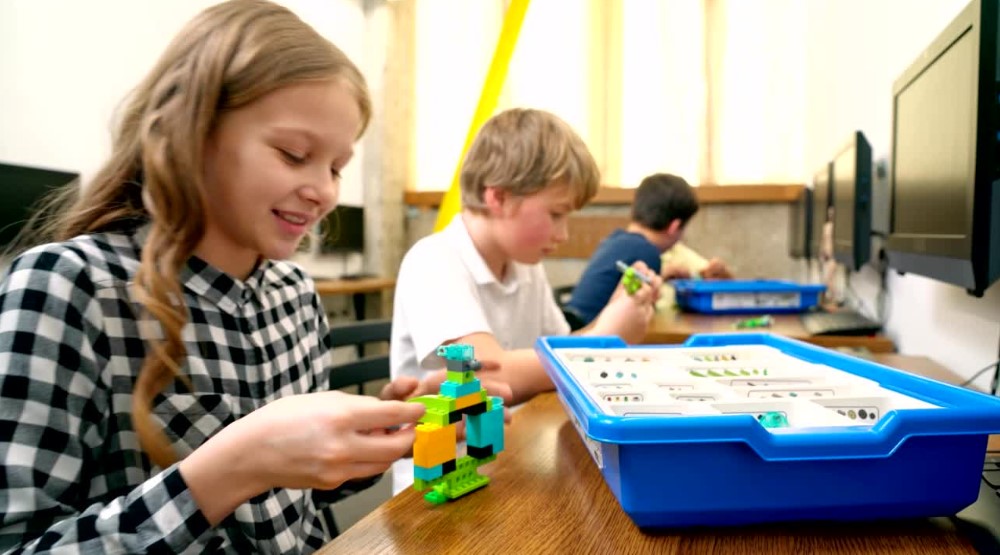
For many parents debating whether or not to let their children play with toy guns, there can be some confusion and hesitation. It is important to find alternatives that are both fun and not harmful to children.
These alternatives to toy guns can bring children and adults alike hours of exciting play while also providing a safe and enjoyable playing experience.
Non-violent Toys
Toy guns are often seen as a quick solution to give children something to do and a creative way for them to learn how to problem solve. Yet, with so many other activities and toys that both maximize imagination and discourage violence, why not opt in favor of alternative playthings?
Non-violent toys provide beneficial imaginative play that encourages children’s creativity. Below are some examples of alternative forms of entertainment that are both affordable and age-appropriate:
- Toy tools – Simulated tools (hammers, saws, etc.) designed for kids.
- Shape sorters – Containers with pieces of various shapes help children learn fine motor skills.
- Clay sets – Arts & crafts kits made from clay can be used for building sculptures and creating designs.
- Dress-up clothes – Kids can explore different roles using fun clothes specifically designed for pretend play.
- Board games – Games like checkers or Chutes & Ladders engage children in competitive activities outside their lives.
- Dolls & stuffed animals – These classic toys allow youngsters to roleplay different types of scenarios while also building empathy along the way.
- Musical instruments – Small versions of musical instruments can easily be found at toy stores which have proven successful at instilling the basics of music among kids through hands-on experience.
By offering your child these alternatives, they are sure to appreciate the opportunity to practice new skills while indulging in their hobbies without resorting to imitation firearms or violence as an outlet.
Board Games and Puzzles
Board games and puzzles can offer excellent entertainment for kids of all ages and may provide a safer and healthier entertainment option than toy guns. Puzzles help increase problem-solving skills, strategy, and motor coordination, while board games provide the opportunity for family fun in a safe environment with measurable rules and goals.
Board games such as Monopoly, Scrabble and Clue all offer classic fun, while new games such as Pandemic and Azul bring sophisticated designs perfect for older kids. Puzzles, from jigsaws to 3D models, provide great entertainment value without dangerous toys.
Most importantly, these alternatives to guns remove children from war simulations, allowing them to focus on healthy competition rather than dangerous or violent play.
Building and Construction Toys
Building and construction toys such as blocks, LEGO, or other sets like K’nex may seem an unlikely alternative to guns, but these imaginative play pieces are some of the oldest toy staples. Building sets come in a variety of shapes and sizes and allow children to construct representations of things they know or find interesting.
Even without being told what to build, let alone make a weapon, children can come up with something even more creative. With interlocking pieces and instructions in most sets, building blocks don’t have to be limited to just traditional towers or castles.
While it is important for kids to learn how shapes work together for problem-solving tasks, these toys help them use their imaginations by allowing them to build tangible works of art around themes that interest them — from dinosaurs shaped out of Legos or animal houses made from wooden blocks.
Additionally, many construction sets are marketed as building tools aiding kids in science and engineering principles while challenging them with higher levels of complexity suitable for older children.
FAQs
Can playing with toy guns affect a child’s behavior in real life?
There is no definitive evidence to suggest that playing with toy guns can lead to real-life violence, but some studies suggest a link between violent media and aggressive behavior.
Should parents allow their children to play with toy guns if they are pacifists or oppose guns?
It is ultimately up to each family to decide whether or not they feel comfortable allowing their children to play with toy guns, based on their individual beliefs and values.
Is it okay for children to play with toy guns in public places?
It is generally not appropriate for children to play with toy guns in public places, as it may cause fear or confusion among others.
Can playing with toy guns have a negative impact on a child’s mental health?
There is no definitive evidence to suggest that playing with toy guns can have a negative impact on a child’s mental health, but it is important for parents to monitor their child’s behavior and ensure they are not overly aggressive.
Should parents be concerned if their child expresses an interest in real guns after playing with toy guns?
If a child expresses an interest in real guns after playing with toy guns, parents should have a conversation with them about gun safety and the potential dangers of real guns.
Should parents set rules or limits on how their children play with toy guns?
Yes, it is important for parents to set rules and limits on how their children play with toy guns, in order to ensure their safety and the safety of others.
Should schools ban toy guns from the classroom or playground?
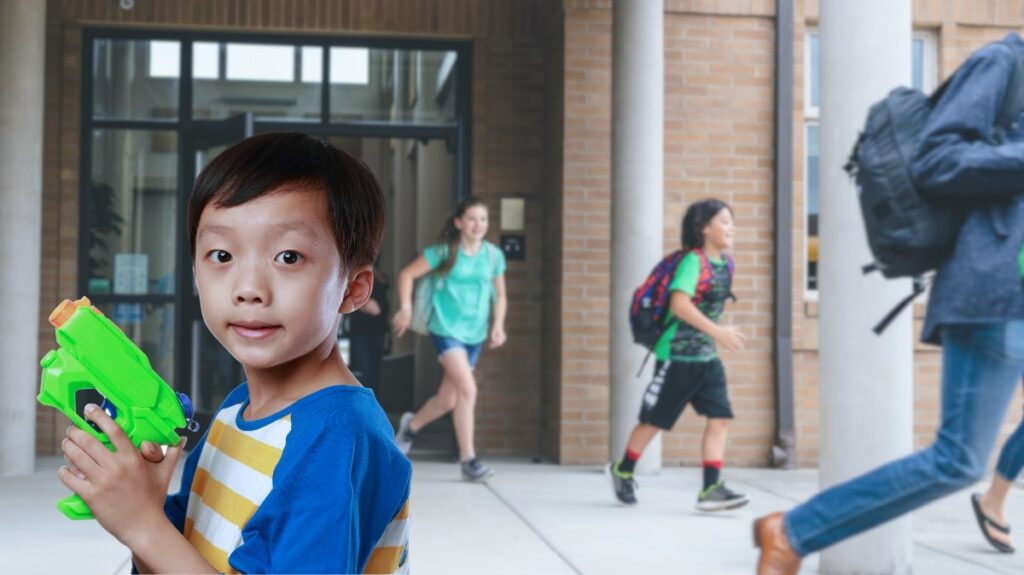
Some schools have policies that ban them from the classroom or playground, but it ultimately depends on the school’s individual policies and values.
Can playing with toy guns have any positive benefits for children?
Some argue that playing with them can help children develop their imagination, social skills, and hand-eye coordination. However, the potential negative impacts should also be considered.
Conclusion
It is important to consider your child’s maturity level when deciding whether or not to allow them to play with them. While some kids may be able to understand the difference between a pretend gun and a real one, younger children may not be able to comprehend the gravity of this distinction.
Talk openly with your child about gun safety, and help guide them by setting appropriate boundaries when playing with these toys.
Make sure you lead by example, as well. If children see their parents and other adults treating toy guns responsibly, they’ll have a positive role model to follow when playing with these toys. Now that you know the potential benefits and risks associated with toy guns, it’s up to parents to decide what is best for their kids based on individual circumstances.
As long as boundaries are set and guidelines are followed, kids can enjoy playing while still learning valuable lessons about gun safety.
